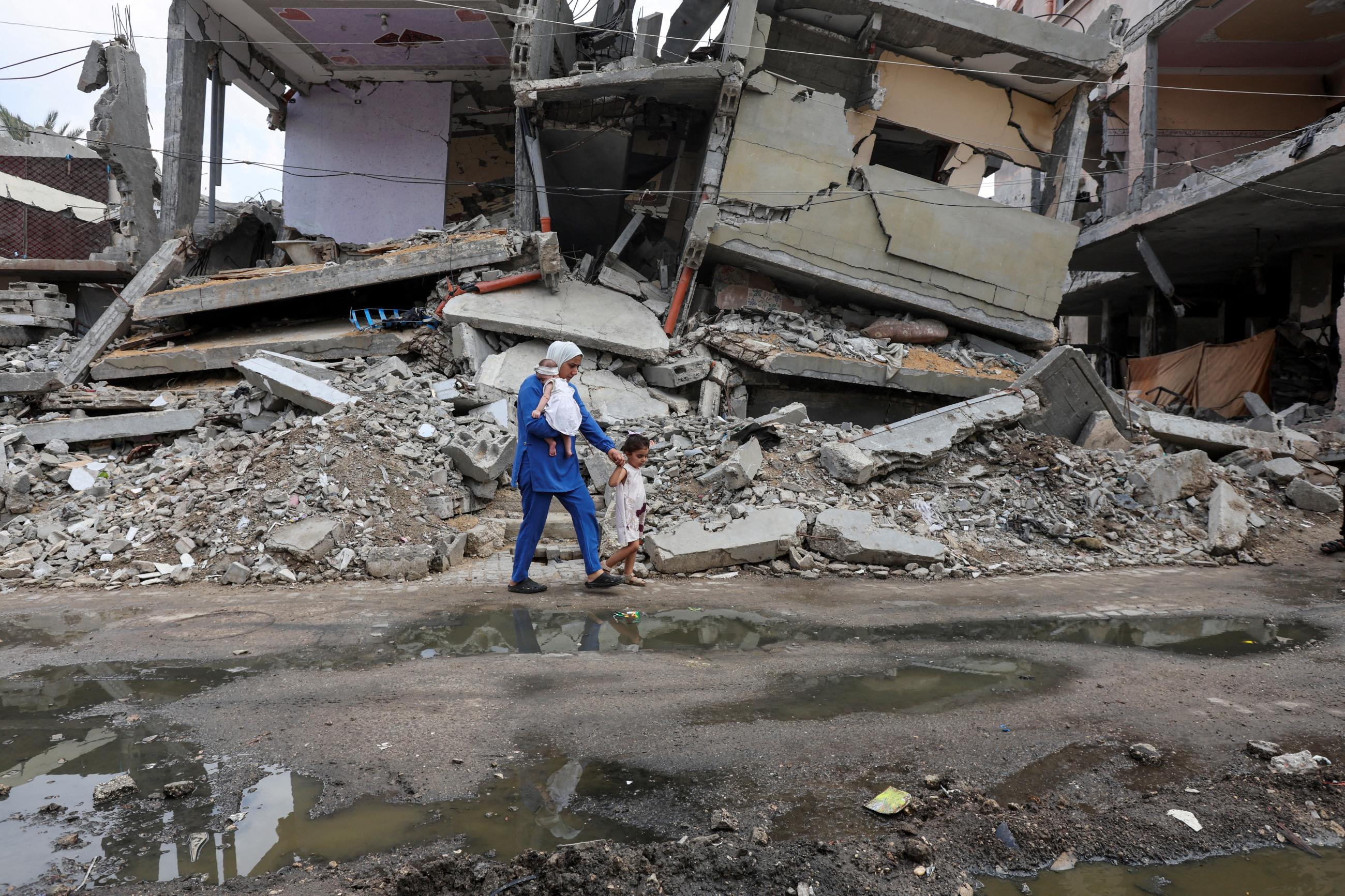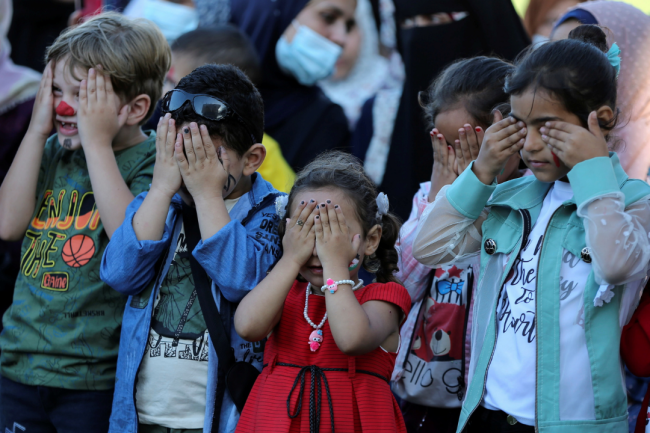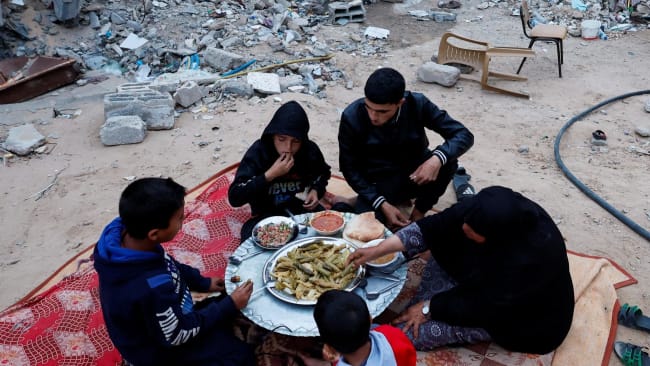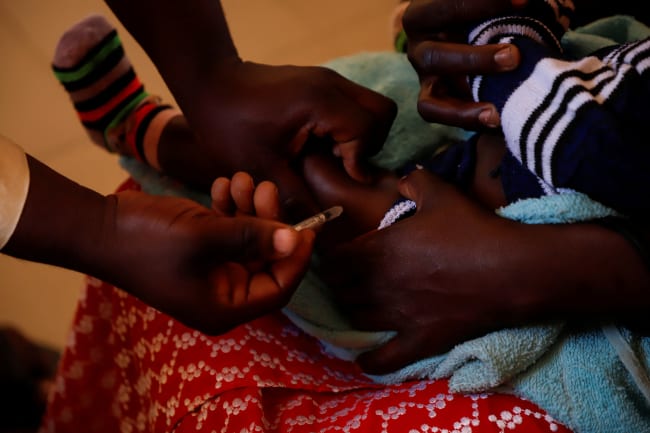The Gaza Strip has descended into a health catastrophe with frightening and long-lasting implications.
The newest calamity is polio. Last month, a 10-month-old baby became the first confirmed case of polio in 25 years. Doctors say the child is paralyzed by the disease. Prior to that case, the World Health Organization (WHO) had appealed for a pause in fighting to allow an emergency vaccination program after earlier detecting evidence of polio transmission through wastewater surveillance.
Polio is both a public health disaster for Gaza and a major risk for Israel—where many in the ultra-orthodox Haredim community are unvaccinated. The Israeli Defense Forces immediately began vaccinating its soldiers serving in Gaza, but the virus doesn't observe boundaries or checkpoints. About 175,000 Israeli children are at risk.
Possibly for this reason, Israel has gone to considerable lengths to cooperate with UN agencies to mount a vaccination drive in Gaza. Public health experts know that achieving the necessary level of coverage demands coordinated halts in hostilities and security guarantees for health workers to assure safe and predictable access to the entire population.
So far, the WHO reports that the emergency vaccination program is meeting its goals. During the first phase, 513 teams vaccinated 187,000 children. Phase 2 is under way and phase 3 is planned to complete this week. A second round is scheduled for next month—an indicator that when Israel wants to see progress on humanitarian challenges in Gaza, it can deliver.
But the progress on the polio drive stands in stark contrast to the obstruction that the Israeli government has otherwise shown toward humanitarian action in Gaza. The reemergence of polio was made possible—indeed perhaps made inevitable—by Gaza's overall infrastructural collapse over the past 11 months. Three of the most common factors that enable the transmission of the polio virus—poor access to sanitation, population overcrowding, and inadequate routine vaccination coverage—occur in extreme forms in Gaza, making it a near-perfect environment for an outbreak of polio. Half the population is crammed into a tiny area that lacks shelter, water, sanitation, and a functioning health system. The remainder are terrified, in hiding, unable to readily access medical care.
Half the population is crammed into a tiny area that lacks shelter, water, sanitation, and a functioning health system
Before the war, UN statistics indicated vaccination coverage levels of almost 99%. Coverage has been eroding since devastating Israeli military operations eviscerated the health system and disrupted routine child vaccination operations.
Herd immunity against polio requires 70 to 97% coverage depending on general hygiene, public health, and poverty. Gaza today needs the upper end of that limit. Mass polio vaccination campaigns must be able to reliably reach the same children at least twice over multiweek increments to ensure the proper administration of a full multidose regimen.
Confidently achieving these goals will demand a radical change in Israeli strategy. It requires a halt to the recurring waves of forced displacement that Palestinians face in Gaza. Between August 1 and 24, Israel issued 16 evacuation orders, forcing people to move multiple times, often at very short notice. Nearly all had previously been displaced more than once. More than a million people, nearly half the population of Gaza, are currently concentrated in al-Mawasi, the only place that Israel has not placed under an evacuation order. The area is about 16 square miles, approximately 11% of Gazan territory. It lacks essential water, medical services, sanitation, energy, and shelter.
Across Gaza, overcrowding and destitution are desperate. Recent evacuation orders in Deir al Balah, a few miles to the north, made it impossible to operate most of the city's water wells, cutting an already overstrained water supply by 80%. Polio virus was first detected there in wastewater in June.
The reemergence of polio cannot be separated from the consequences of war. Even if polio is contained, a health catastrophe is unfolding.
Access to Humanitarian Aid
Aid access is limited and has especially dwindled since the major crossing point at Rafah—the only one of three not controlled by Israel—closed following an Israeli offensive in May.
Aid workers face daily frustrations with slow and unpredictable Israeli government authorizations for the movement of supplies, and frequent delays even when movements are approved. Truck convoys are slowed by rubble on the roads and often held for hours at checkpoints, where drivers have been besieged by desperate crowds and sometimes by armed looters.
In July and August, the World Food Program brought in just half of what it needs to feed its target of 1.1 million people.
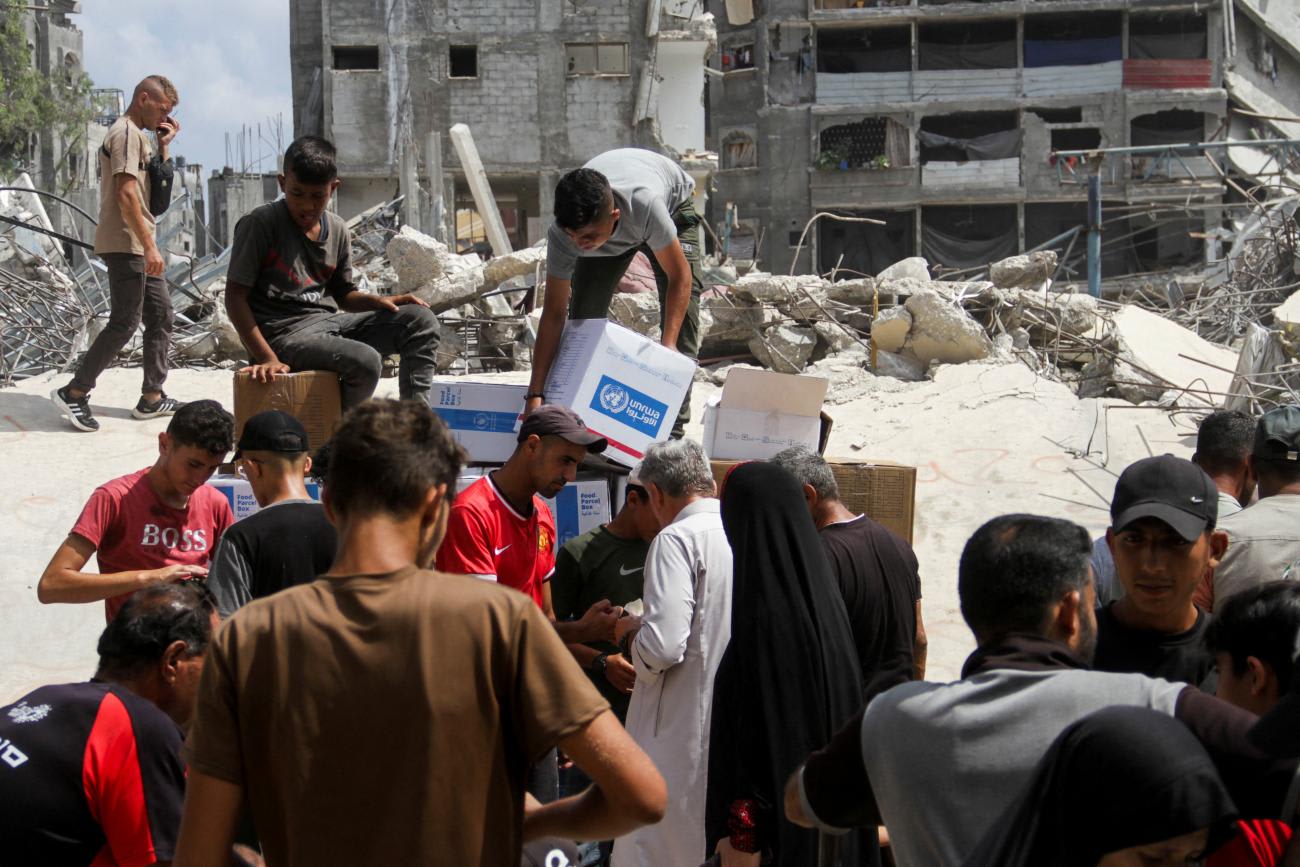
Food supplies into Gaza have slowed to a trickle—and most of the food coming in is commercial food, not aid supplies. As the U.S. Agency for International Development's (USAID's) Famine Early Warning System Network noted, "Increased approvals of commercial cargo entry into Gaza may not necessarily translate to improved food availability and access within Gaza, particularly given low household purchasing power." That is, those who need the food aren't likely to be getting it.
The UN-accredited integrated food security phase classification (IPC) initiative estimates that 495,000 people are in "catastrophe" and 745,000 are facing "emergency." Child malnutrition is skyrocketing. A UNICEF survey in July found that only 1% of children in northern Gaza and 6% in the south received the recommended dietary diversity.
This has prompted months of famine warnings. Senior officials in the U.S. government and the United Nations, including USAID Administrator Samantha Power and World Food Program director Cindy McCain, rang the famine alarm earlier this spring. In March, the IPC's Famine Review Committee (FRC) reported that famine was imminent in northern Gaza. The FRC estimated that 55% of the population of northern Gaza, approximately 165,000 people, were experiencing "catastrophe."
The Israeli government responded to international pressure by supplying just enough food to keep Gaza in a pre-famine holding pattern. The UN reported more commercial and aid food targeting the worst-hit northern Gaza in the weeks after the famine warning, enough—if equitably distributed—to feed 300,000 people in April and May.
The FRC estimated 55% of the population of northern Gaza, approximately 165,000 people, were experiencing "catastrophe"
In June, the FRC reported both that the situation had stabilized and the "risk of famine" if aid operations were disrupted. It noted better food availability but also stressed that IPC phase 4 emergency represented an extreme and unacceptable level of distress. In countries such as South Sudan and Yemen, hundreds of thousands have perished from malnutrition and related causes, without famine thresholds being breached. Typical of emergency conditions is a mortality rate of 1 per 10,000 per day—and before October last year, the rate was just 0.11 per 10,000 per day, indicating a very likely spike in hunger-related deaths. The toll won't be known until proper epidemiological studies can be done—by which time it will be too late to address the crisis.
It needs to be stressed just how bad emergency conditions are. People are skipping meals, eating food substitutes such as wild grasses and animal feed, and selling household items in order to buy food. Parents are going hungry to enable their children to eat, and more of those children are becoming malnourished and sick with infections made more virulent by their damaged immune systems. The IPC report observed a "breakdown of cultural norms and caring practices due to the ongoing conflict, constant displacement, and extreme shortages of basic needs undermines the distribution to most vulnerable groups of elderly, women, and people with disabilities." They warned of the dangers of outbreaks of communicable diseases.
Less easily measured but no less important than hunger are dignity, a sense of security, and their opposites, humiliation, anxiety, and trauma. These are the deep imprints of this human catastrophe, invisible in the metrics.
The polio outbreak is an emergency in its own right. It is also a symptom of a health, food, and shelter catastrophe brought about by 11 months of relentless destruction of all that is necessary to sustain life in Gaza.
